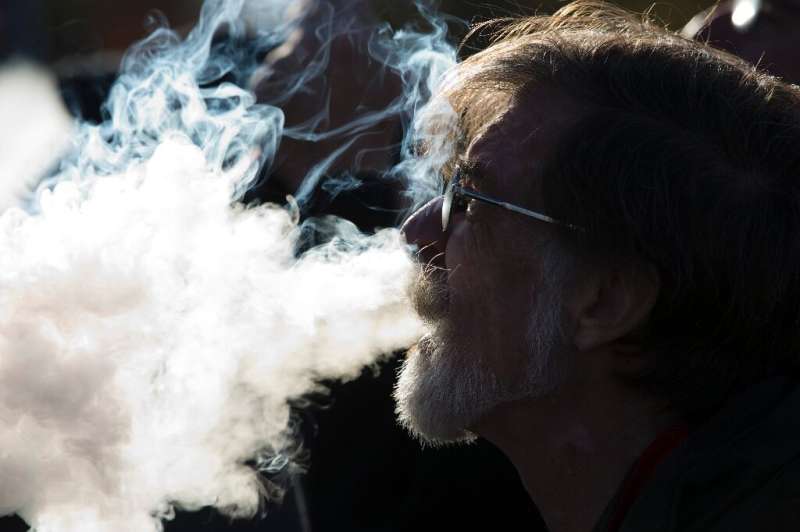
Australia announced a sweeping crackdown on vaping Tuesday, accusing tobacco companies of hooking the next “generation of nicotine addicts” by deliberately targeting teenagers.
Billed as the country’s largest anti-smoking reforms in a decade, Australia will ban single-use disposable vapes, halt imports of non-prescription versions, and restrict how much nicotine e-cigarettes may contain.
Australia has long been at the vanguard of attempts to stamp out smoking, and in 2012 became the first country to introduce “plain packaging” laws for cigarettes—a policy since copied by France, Britain and others.
But in recent years, Australia has struggled to contain the explosion in recreational vaping, particularly among teenagers.
“Vaping has become the number one behavioral issue in high schools. And it’s becoming widespread in primary schools,” Health Minister Mark Butler said.
“Just like they did with smoking, Big Tobacco has taken another addictive product, wrapped it in shiny packaging and added flavors to create a new generation of nicotine addicts.”
People will still be allowed to use vapes, with a prescription, as a tool to help them quit cigarettes.
“Vaping was sold to governments and communities around the world as a therapeutic product to help long-term smokers quit,” Butler said.
“It was not sold as a recreational product—especially not one for our kids.”
Butler also announced Australia will hike taxes on tobacco sales by five percent each year over the next three years.
Heavy taxes on tobacco mean Australia already has some of the most expensive cigarettes in the world—with a pack of 25 selling for around Aus$50 (US$33).
Black market
In theory, it is already illegal to buy nicotine e-cigarettes in Australia without a prescription.
But in practice, they are widely available in small convenience stores—a flourishing black market the government has struggled to contain.
Sydney office worker Andrew Kohn, 31, said there was a need for stricter regulations.
“You go by a school during lunch hour now and it’s hard to see a kid who isn’t vaping,” he said.
Student Ruby Lake, in her early 20s, said she had seen some of her friends become addicted to e-cigarettes.
“They’re wanting to quit and they can’t,” she said.
E-cigarettes were introduced in the early 2000s and initially billed as a less-harmful replacement for traditional cigarettes packed with cancer-causing chemicals.
But an emerging body of research has shown vapes can also be highly addictive, and often result in young users turning to cigarettes as a way to get their nicotine fix.
A 2022 study by the Australian National University found adolescents who vaped were three times more likely to start smoking.
“Nicotine use in children and adolescents can lead to lifelong addiction issues as well as difficulties in concentration and learning,” the researchers said at the time.
“Vapes deliver hundreds of chemicals—some of them known to be toxic and many others with unknown effects.”
Cancer Council chief executive Tanya Buchanan said Australia was fighting a “vaping epidemic” and had a shrinking window to take control.
She said e-cigarettes were not safe and threatened “Australia’s hard-fought successes in driving down smoking rates”.
Australia has one of the lowest daily smoking rates in the world, according to the Australian Institute of Health and Welfare, but has seen an increase in the number of under-25s taking up cigarettes.
© 2023 AFP
Source: Read Full Article





